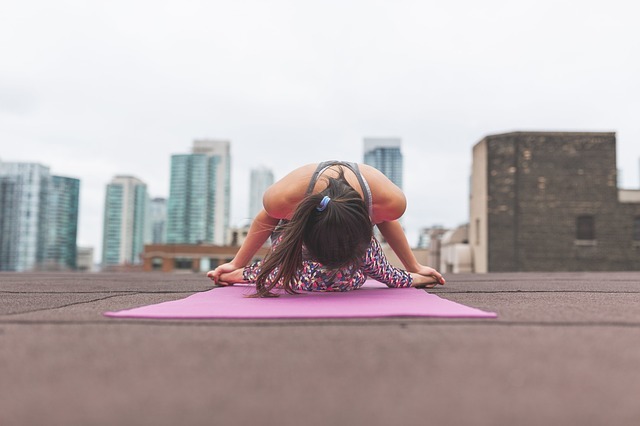Yoga has become a popular activity for people who want to do an exercise that unifies mental awareness and physical well-being. To provide a good base while practicing yoga with a variety of challenging poses, it is recommended to use yoga mat in exercising. Yoga mats are produced in a variety of styles, thicknesses, and materials, which provide certain benefits and functionality to the user.
History of Yoga Mat
The practice of yoga was developed over 5,000 years ago in India. Yoga means “to join together” and aims to bring the body and mind into one unity by focusing on three main areas: physical exercise, breathing, and meditation. When first developed, yoga practitioners often used a mat made of tiger skin, deer skin, or grass. In the 20th century, rubber mats began to be developed, with variations and materials yoga mats increasingly diverse until today.
Yoga Mats Versus Sport Mats
Until the 1990s, sports mats were sometimes used for yoga even though they were not intended. Sports mats are generally thicker than yoga mats and have a tendency to slip or slip on the floor. Yoga mats require only a little cushioning and need more stability, so sports mats are not an ideal alternative to yoga. Yoga mats are made of several different materials so you can choose them as needed. Before buying, think about how the material can affect the function of the mat and whether it fits your needs. Here are the properties and characteristics of some yoga mat materials:
> PVC
Pros: It is the stickiest material on the floor so it reduces the risk of slipping.
Disadvantages: Not environmentally friendly and not easy to absorb sweat.
> Rubber
Pros: Provides enough flexibility as well as sticky enough on the floor.
Disadvantages: Potentially causes allergic reactions for users who are sensitive to latex and it’s less absorbent of sweat.
> Jute
Pros: Environmentally friendly and absorbs sweat.
Disadvantages: May create resistance when changing position and has less comfortable texture.
> Cotton
Pros: Environmentally friendly and absorbs sweat.
Disadvantages: Making rotating or changing positions is rather difficult due to friction of the cotton fibers.
The main differences between the types of yoga mats range from the level of sweat absorption (fluid), the level of adhesiveness to the floor, and the eco-friendly properties. If you want to get eco-friendly yoga tools, you are suggested to buy them from the Best US Yoga Shop.
Textures
Yoga mats are available in a variety of textures that determine how much traction is useful for standing poses, but may cause discomfort during sitting or lying poses. Flax mats have a coarse texture, while PVC and rubber mats have varying degrees of roughness. If fine texture is absolute, a PVC mattress with fine texture is the right choice.
Thickness of Yoga Mattress
The thickness of the yoga mat determines the comfort level of the mat when doing a sitting or lying posture, but can greatly affect stability when performing a standing pose. So there must be a balance between comfort and stability when deciding to buy the right yoga mat.
I’m a 20-something stay-at-home mother and wife. I have an amazing husband, a beautiful daughter, two loving dogs, and a lazy cat. I wouldn’t change my life for anything! I love to read, listen to music, cook and blog!


Hey Courtney! Nice post. It’s always such a pain for me as the choice is so huge nowadays 🙂 I personally like cork yoga mats. They are a bit expensive but totally worth it. Cork mats are very eco-friendly and are usually made of the organic material of cork texture combined with natural rubber or TPE at the bottom. They smell awesome (not like those chemical PVC mats) and offer excellent grip.
I’ve also recently made a short guide to yoga mats. Check it out if you’re interested.
Cheers 🙂